In the 1950’s, when television was still new and open to experimentation, seven women assisted at its birth: Martha Rountree, Hazel Scott, Anna May Wong, Gertrude Berg, Betty White, and Lucille Ball. They were not the only women in early television, but these deserve recognition as First Women who had lasting impacts on the medium. All had performed on the radio before making the transition to the small living room screen. All pushed television toward what it would become. All were innovators.
These seven First Women in Television are presented below in chronological order of their First Woman achievement.
Martha Rountree (1911-1999): First Moderator of Meet the Press – 1947
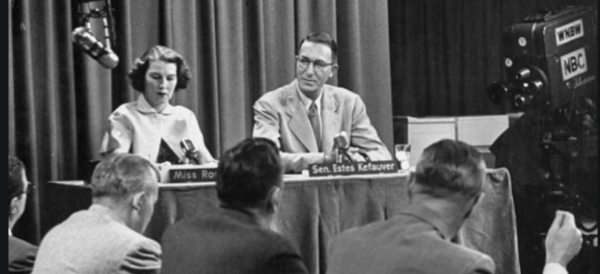
Martha Rountree is recognized as the First Woman moderator of Meet the Press, but not as its creator. History often reports that Meet the Press was co-created by Lawrence E. Spivak and Martha Rountree, but this does not appear to be the case. Spivak became co-producer after the show had already debuted, so Rountree was probably the creator.
The concept for the show was unique in television. Rountree conducted unscripted live interviews with political figures. It was the first show on which a sitting president appeared (Gerald Ford, in 1975). As of this writing, the show is the longest-running show on television—74 years! Rountree hosted the show from 1947 to 1953. Eleven very high-powered names in news broadcasting have hosted the show since then. All have been men; no other woman has moderated the show.
Irna Phillips (1901-1973): Creator of the Television Soap Opera – 1949
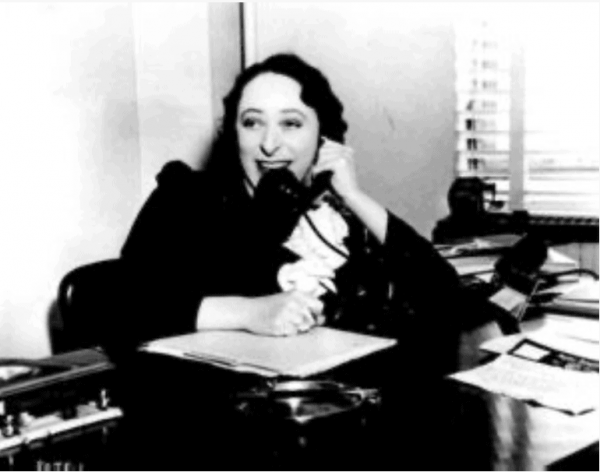
Daytime serials began on the radio and were designed so that women could listen while doing their housework. When Irna Phillips created These are My Children for television in 1949 the format was only 15-minutes long because the owners of television stations still believed that women would not want to stop their housework to sit down and watch television.
In 1956, Phillips created As the World Turns, one of the first two daytime serials to run for a half-hour. (The Edge of Night premiered the same day.) As the World Turns was the highest-rated daytime drama for two decades, from 1958 until 1978.
Hazel Scott (1920-1981): First Black American to Host her own TV Show – 1950
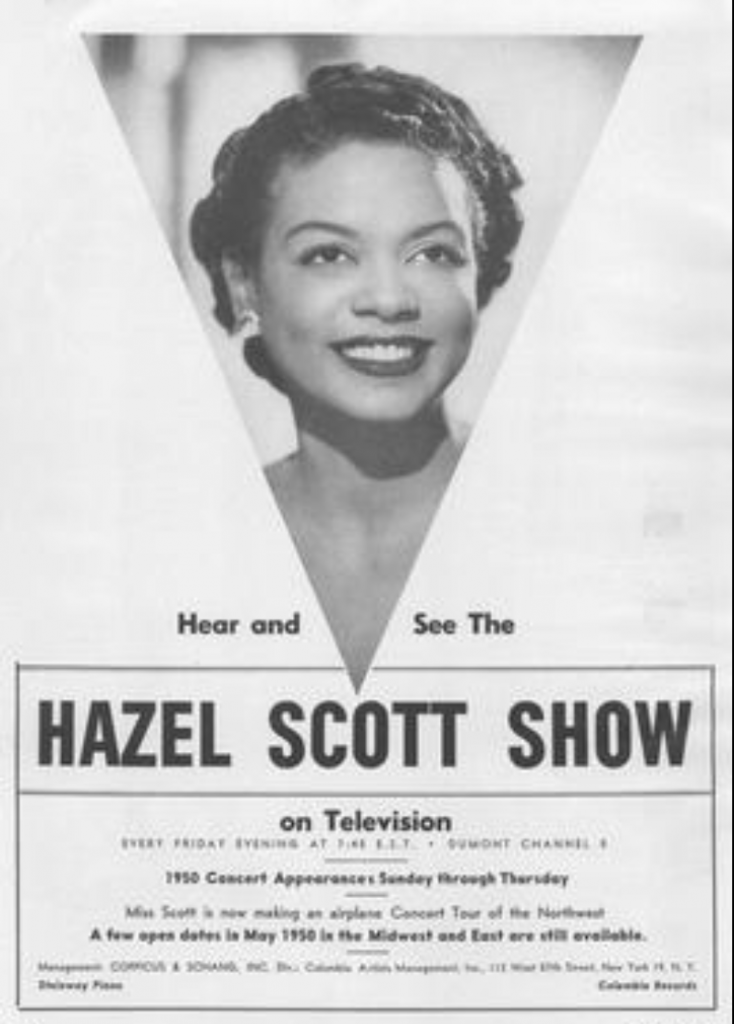
Hazel Scott was classically trained as a musician at Juilliard. She performed classical and jazz music for audiences in the United States and abroad and especially enjoyed wowing the audience by playing two pianos at once. Concert venues, the radio and the movies had already showcased her widely-recognized talent.
Although Ethel Waters had been the First Black American to host a TV special (in 1939), Hazel Scott was the First Black person to host her own regularly-scheduled TV Show. The Hazel Scott Show ran during the summer of 1950. Because she was an activist for equal rights, Scott became a target of the House Unamerican Activities Committee’s communist witch hunt. After being called before them, she moved to Paris where she performed throughout Europe before returning to the United States in 1967.
Anna May Wong (1905-1961): First Asian American Lead in a Television Show – 1951
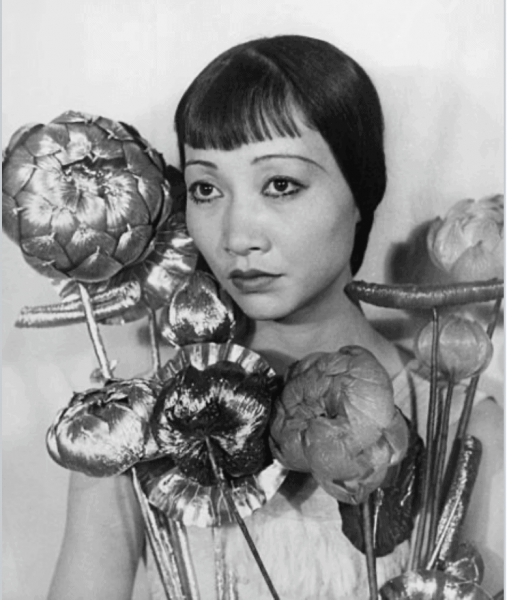
Anna May Wong is called the First Chinese American Hollywood star. Before television, she had already worked on stage, radio and silent film (including with Douglas Fairbanks in The Thief of Bagdad). An early adopter of the flapper look, she was named “the world’s best dressed woman” in 1934. Frustrated with stereotypical characters, she spent part of the 1930’s in Europe, seeking better roles. In 1935 she hoped to play the lead character O’Lan in Pearl Buck’s The Good Earth but the role went to a white woman using yellowface makeup. Wong was offered another role but refused it.
In 1951, Wong starred in The Gallery of Madame Liu-Tsong, the first U.S. television show with an Asian American lead. A decade later she looked forward to playing Madame Liang in the film production of Flower Drum Song, but she died in her sleep of a heart attack before the filming began. It was only a year after she had been awarded a star on the Hollywood Walk of Fame.
Gertrude Berg (1899-1966): First Woman to win an Emmy Award for Lead Actress – 1951
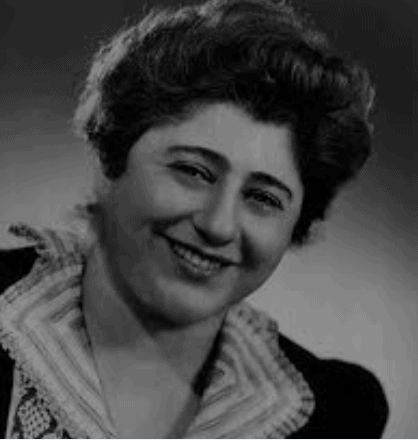
Gertrude Berg created the fictional Jewish Goldberg family for radio in 1928. She wrote almost all the episodes of the fifteen-minute serial that ran daily. She was convinced the show was translatable to the new medium of television and campaigned to have it broadcast. The show was first televised in 1949. The sets were simple, costume changes were actually the shedding of one costume for another underneath it, and it was shot live but without a studio audience.
In 1951 Berg won the very first Emmy awarded to a Lead Actress in a Television Series. She had already played the role of Molly Goldberg for twenty years. When the show left television, after a combined radio-television run of 27 years, Berg re-created herself as a serious actress. She was 52 years old when she won a Tony for Best Actress.
Betty White (1922- ): First Woman to Produce a Sitcom – 1955 and First Woman to win an Emmy for Outstanding Daytime Game Show Host – 1983
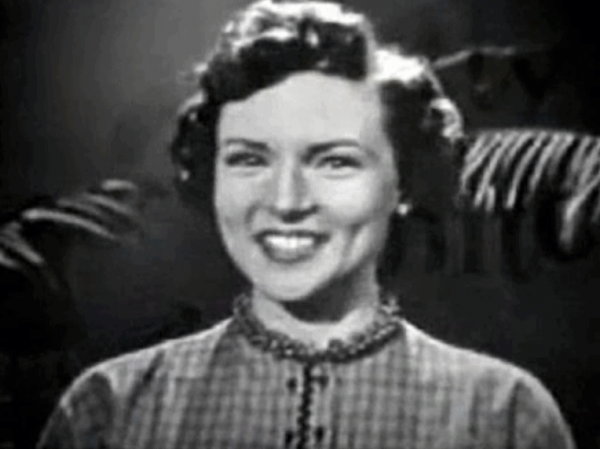
When we hear the name Betty White, we are not likely to think of her as a leader in early television. We see images of a sweet, animal-loving, perhaps a bit ditzy woman, with a wonderful sense of humor. But this same Betty White was the First Woman to produce a television sitcom.
Her career began on the radio, then moved to television where she hosted an unscripted television show that ran five and a half hours, six days a week for four years. In 1953, she co-created and produced Life with Elizabeth for television with herself as the title character.
In 1955 she was named honorary Mayor of Hollywood. She went on to appear on many game shows and hosted the show Just Men! for which she was the First Woman to win an Emmy for Outstanding Daytime Game Show Host in 1983. She appeared in many popular sitcoms and is the only woman in this blog post still active today at the age of 99.
Lucille Ball (1911-1989): First Woman Head of a Production Studio – 1962
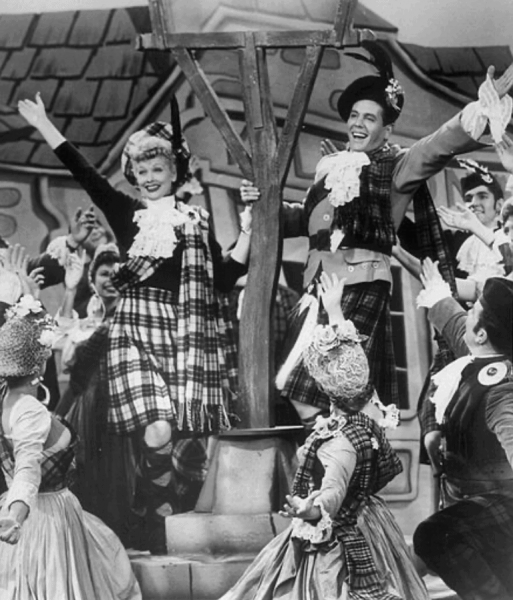
Similar to Betty White, we know Lucille Ball for the most part as the ditzy comic with red hair who could stuff a factory-full of bonbons into her mouth. She was also, however, a smart executive. When the networks would not sponsor the I Love Lucy show, she took it on the road to prove that her Hispanic husband, Desi Arnaz, was marketable to audiences.
The show premiered in 1951 and was a pioneer in television production. Within six months it was the nation’s number one show. At that time, when there were only 15 million televisions in the United States, 11 million sets were tuned to I Love Lucy. Her audience is almost as large as those of NCIS, the most-watched show on primetime television in 2020 (with 11.65 million views). Unlike many of the productions created by or featuring other women in this article, whose work has not survived, Ball filmed her show in expensive 35-mm film. This meant that the show was preserved for additional viewing, in other markets, in other countries, and in future decades. When Lucille Ball and Desi Arnaz divorced, Ball bought out her husband’s interest in Desilu Productions and became the First Woman to run a production studio.
Want to Know More?
Four of these women (Hazel Scott, Irna Phillips, Gertrude Berg, and Betty White) are featured in When Women Invented Television by Jennifer Keishin Armstrong, but all are mentioned in her book. If you want to know more, you might enjoy reading the results of her extensive research.
You will also find longer blogs on Martha Rountree and Lucille Ball on this website. Links are incorporated in relevant sections above.

